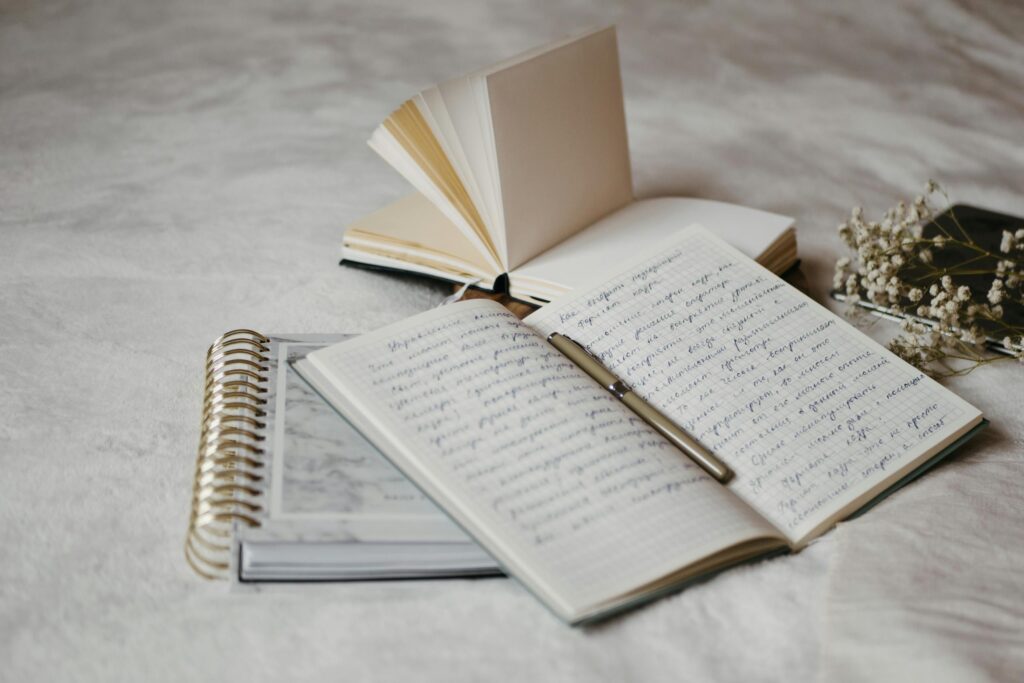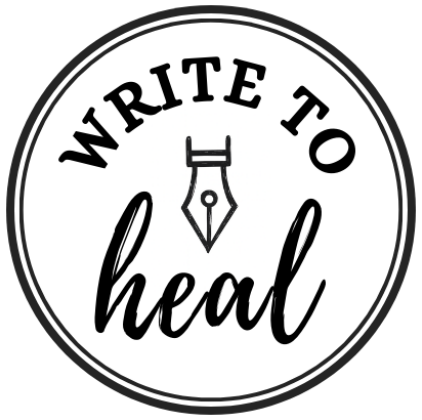Digital vs Paper Journaling: Which One Engages Your Brain (and Heart) More?
Some days a notebook feels like a soft place to land. Other days it feels heavy, almost impossible to open. And maybe that is when the notes app or a digital journal starts to whisper its invitation.
If you have ever wondered about digital vs paper journaling and which one supports healing more deeply, you are not alone. Many people are curious about how different journaling methods affect mental clarity, creativity, and emotional regulation.
The truth is that no single form of journaling is better than another.
I believe The best journal is the one that works for you.

Why the Debate about Digital vs Paper Journaling?
The conversation around digital vs paper journaling is not about choosing sides. It is about understanding how each format supports your mind and your nervous system in different ways.
Digital journaling offers flexibility, portability, and built-in tools for consistency, while paper journaling provides sensory grounding, calm, and deeper cognitive engagement. Both can help you process emotions, build awareness, and reconnect with yourself, just through different pathways.
The Case for Digital Journaling
Digital journaling has become a lifeline for people who crave reflection but spend most of their day in front of screens. It offers convenience and privacy (it’s harder for a housemate to accidentally open your journal) and allows you to capture thoughts anywhere without worrying about lost pages or messy handwriting.
For many, typing also keeps pace with fast-moving thoughts, creating a sense of flow that feels productive and freeing.
Research supports these benefits:
- A 30-day study featured in Social Work Today found that participants who took part in a digital journaling challenge expressed the same emotional depth and healing outcomes as those who wrote by hand.
- Another study published by the National Institutes of Health found that structured online journaling helped reduce stress and depressive symptoms while building resilience. The message is clear: typing can be just as emotionally expressive as writing by hand when you approach it with intention.
Digital journaling tools like these make it easy to stay consistent:
Many digital journals allow you to tag entries, set reminders, and include photos, which can help you see growth over time. Even lesser-known apps like Stoic or Penzu can be wonderful for their simplicity. These small features make journaling approachable for those who might otherwise struggle to maintain the habit.
Digital journaling does have its drawbacks. Screens can cause fatigue, and the sensory grounding of pen and paper is harder to replicate. (If you struggle to find focus, my post on journaling for burnout recovery offers simple ways to reconnect with your body before you begin to write.)
But for those balancing work, family, and mental health, digital journaling can remove the barriers that prevent reflection altogether. It is less about perfection and more about creating a space that works in your real life.
The Case for Paper Journaling
The other side of the digital vs paper journaling debate speaks to something timeless: The feel of a pen, the weight of a notebook, the quiet that comes when you let your hand move across the page.
Handwriting slows the mind and invites the body into the process. It is both grounding and meditative, helping you stay present with your thoughts instead of rushing past them.

Scientific research shows that handwriting affects the brain in unique ways. A 2023 study in Frontiers in Psychology found that handwriting activates broader brain connectivity than typing, especially in areas tied to memory and learning. Another study from the University of Tokyo showed that people who wrote by hand remembered information more clearly than those who typed, likely because handwriting provides more spatial and tactile cues.
Additional findings reported by Scientific American note that writing by hand engages complex brain circuits related to comprehension and emotional processing. The physical act of moving a pen across paper may help the brain encode emotions and experiences more deeply. Cognitive psychology commentaries, such as those published by Draw Right, also suggest that the sensory feedback of handwriting, including the feel of the paper, the rhythm of motion, and the sound of the pen, can help calm the nervous system and promote focus.
Hand Journaling as Therapy
Many journalers describe handwriting as a form of therapy in itself. The texture of paper and rhythm of pen strokes calm the nervous system and make the process more embodied. Mistakes, crossed-out lines, and uneven handwriting all become part of the story. The slower pace encourages honesty and reflection.
If you are exploring paper journaling, here are some options that are beloved for their quality and simplicity:
- Leuchtturm1917 A5 Dot Grid (blank, also very popular for bullet journaling)
- Moleskine Classic (blank, lined)
- 5 Minute Journal (simple daily prompts)
- Gratitude Journal (also simple, daily prompts but focused on gratitude)
And here are a few eco-friendly options that are worth exploring if you love paper that feels beautiful to use:
- Dingbats Earth Collection (blank, dotted)
- Archer & Olive (lots of beautiful options)
If this idea of handwriting as therapy speaks to you, you might enjoy my posts on how to start journaling for mental health (even if you’ve tried and quit before). It offers gentle guidance for creating a journaling routine that feels supportive rather than overwhelming.
What Science Says About Digital vs Paper Journaling
Taken together, research paints a balanced picture. Handwriting activates more sensory and memory-related regions of the brain, while digital journaling encourages consistency and accessibility. Each has its strengths.
Paper journaling tends to create deeper cognitive and sensory engagement, improves memory retention, and promotes grounding through the physical act of writing. Digital journaling lowers barriers to entry, increases accessibility, and has been shown to reduce stress when practiced regularly.
Scientists agree that digital vs paper journaling is not a competition. Each activates different neural pathways and can support mental health when practiced intentionally.
How to Choose Your Ideal Journaling Method
If you are unsure where to start, try this small experiment:
- Journal by hand for one week and notice how your mind and body feel afterward.
- The following week, use a digital tool and pay attention to how that experience differs.
- Reflect on which approach feels calmer, clearer, or more restorative.
You may find that both serve different purposes. Many people use digital journals for goal-setting or daily check-ins and paper journals for emotional reflection. The best method is the one that feels sustainable and true to you.
Final Thoughts on Digital vs Paper Journaling
Both digital and paper journaling can strengthen self-connection, ease anxiety, and nurture creativity. The science simply shows that they work in different ways. What matters most is not the method, but the meaning you bring to it.
There is no perfect system, only the practice that helps you meet yourself with honesty and care.
If you would like to explore journaling more deeply, I share weekly prompts and reflection tools through the Write to Heal newsletter. You can sign up to receive a free journaling kit and continue your own digital vs paper journaling journey.
Quick Reference: Research Sources
- NIH / JMIR Mental Health — Web-Based Positive Affect Journaling Study
- Frontiers in Psychology — Neural Connectivity During Handwriting vs Typing (2023)
- University of Tokyo — Writing by Hand Enhances Memory Recall
- Scientific American — Why Writing by Hand Is Better for Memory and Learning
- Draw Right — The Cognitive Benefits of Handwriting
- Social Work Today — The Power of Digital Journaling
Affiliate Disclosure – As an Amazon Associate, I earn from qualifying purchases. This means I may receive a small commission if you buy something through the links in this post, at no extra cost to you. I only share tools and journals I genuinely use or believe will support your healing and creative growth. Your support helps me continue creating free resources for the Write to Heal community. Thank you for being here.
